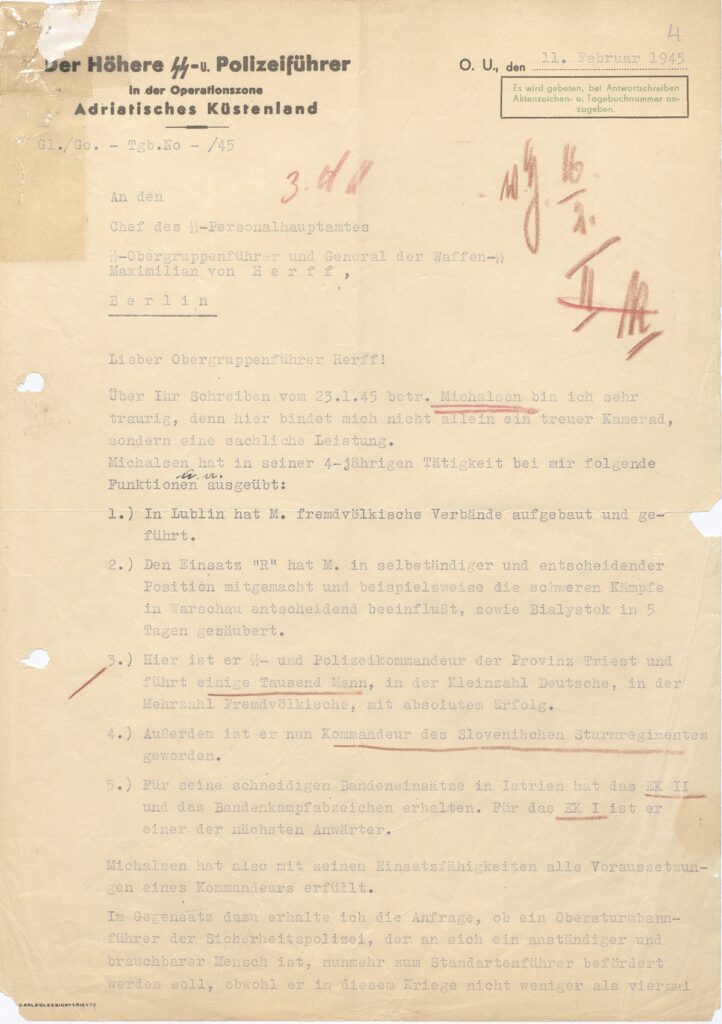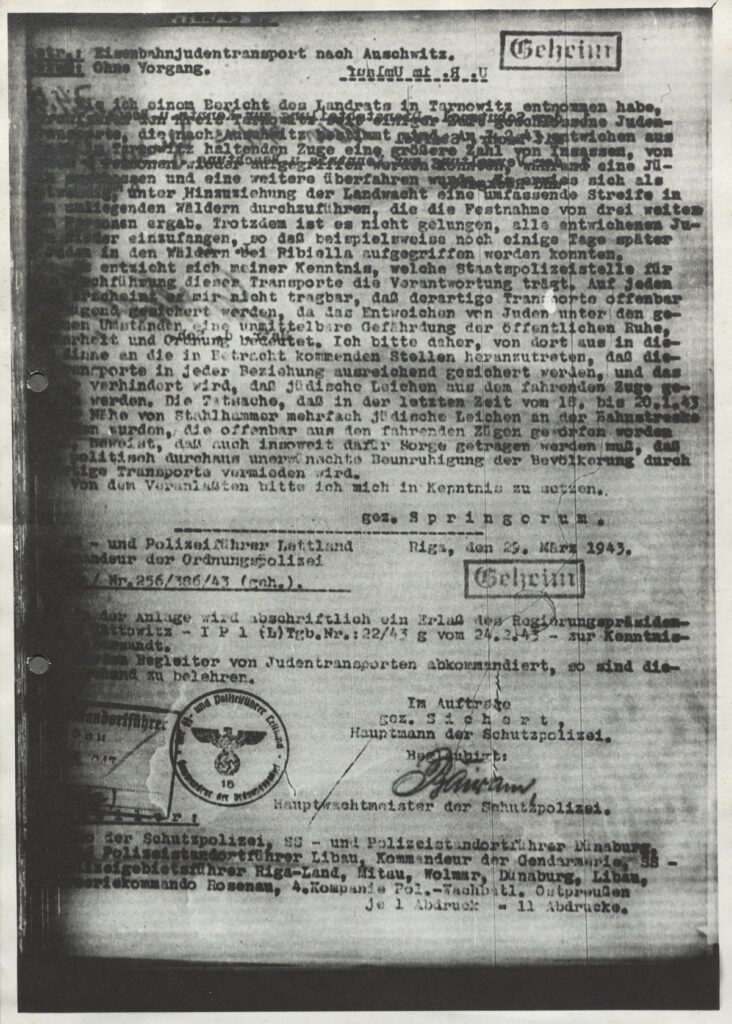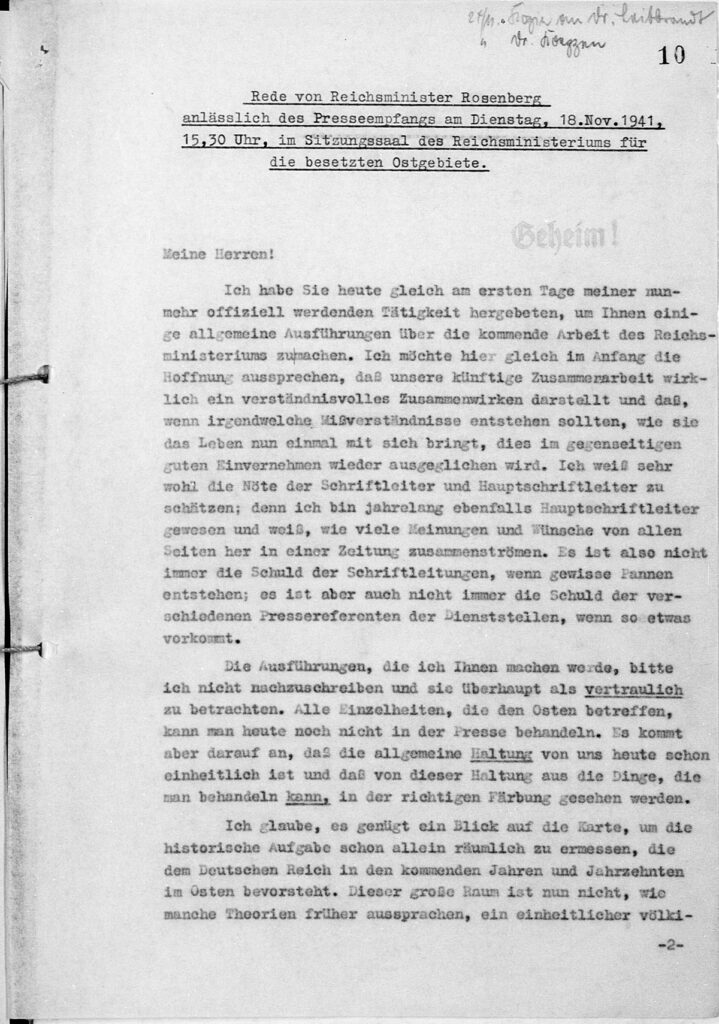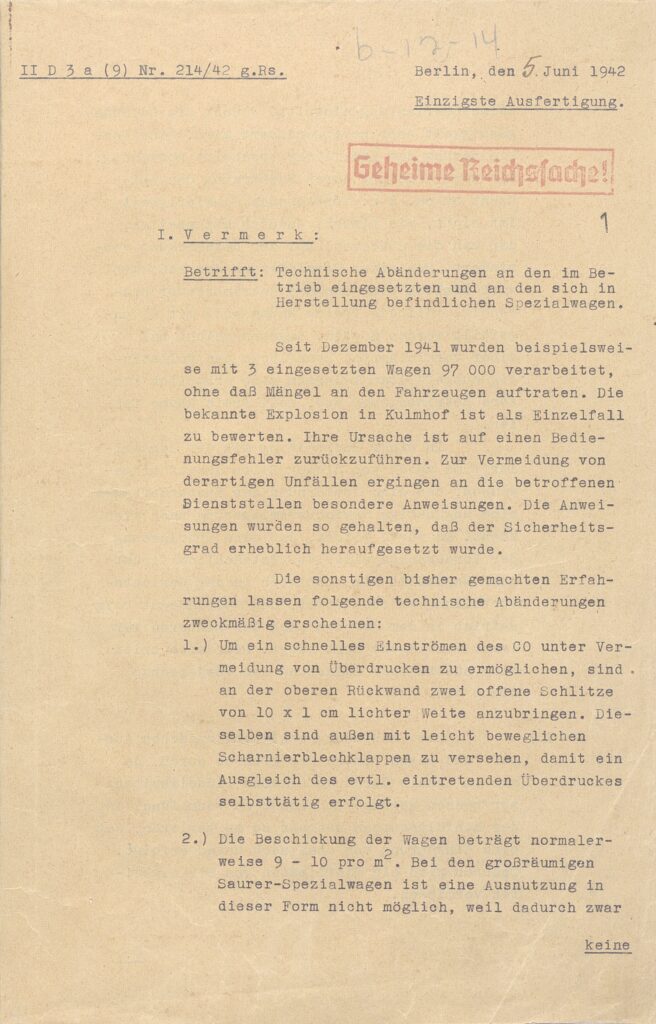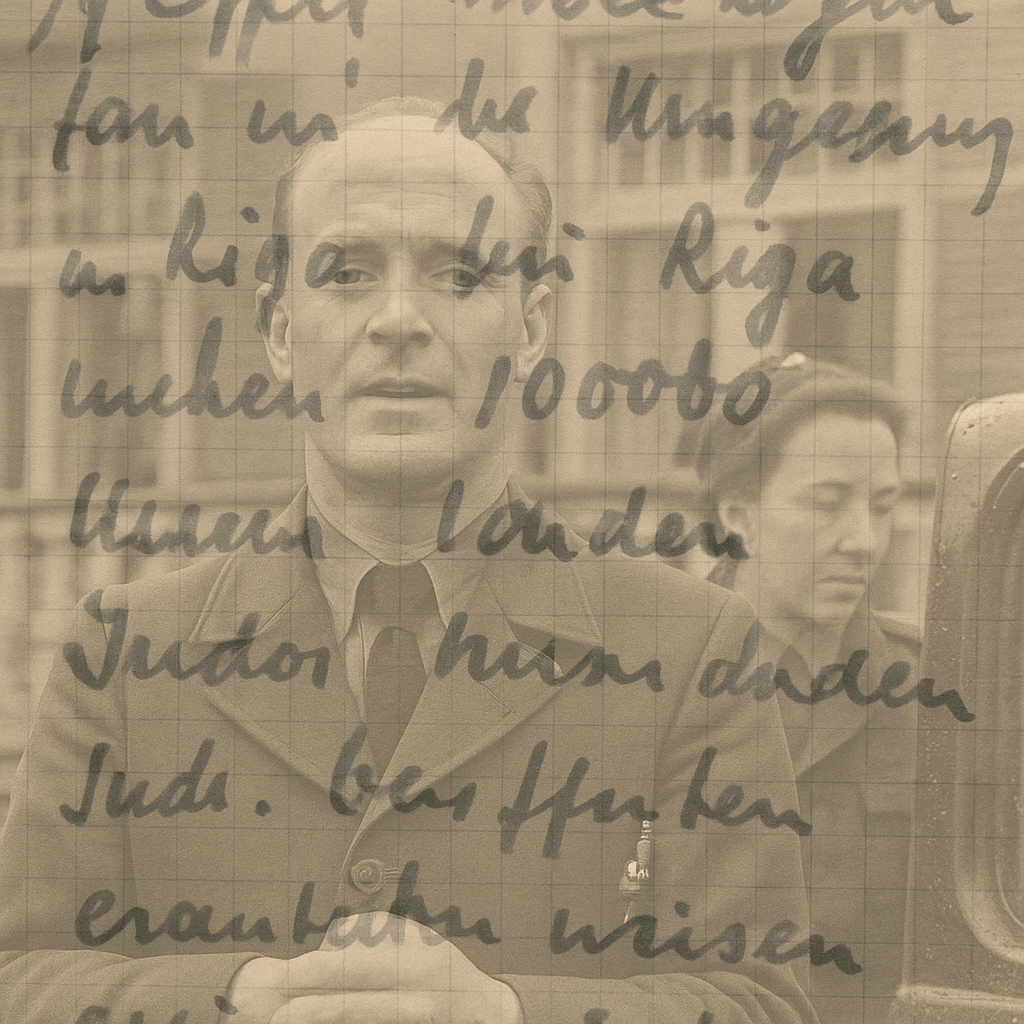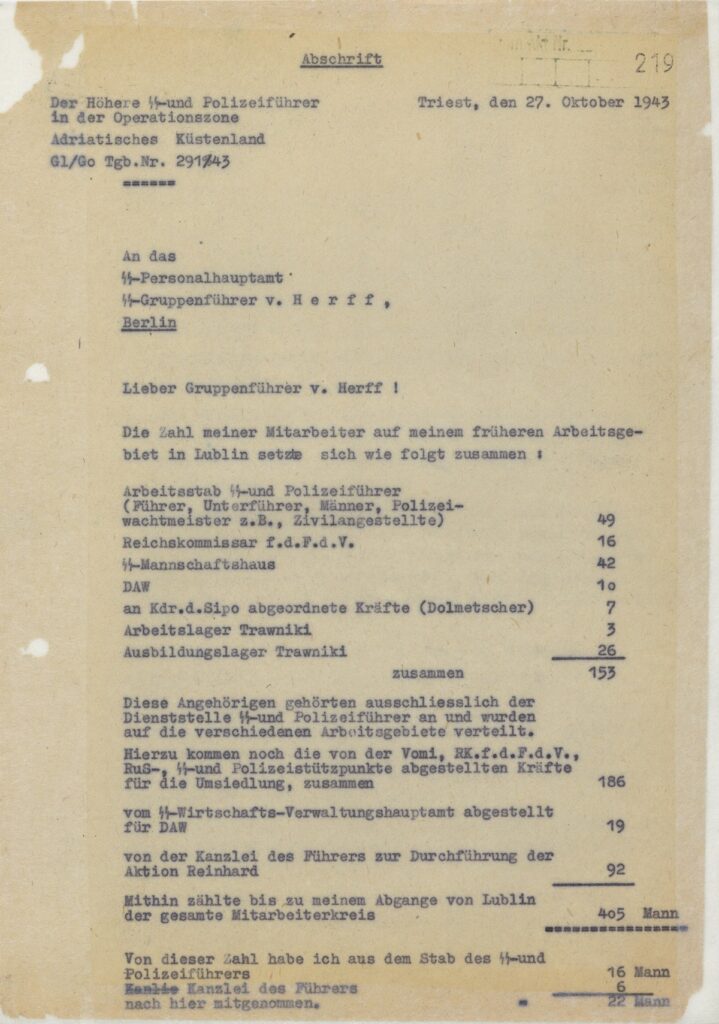1945-02-11 / Globocnik Urges Promotion of SS Officer Involved in Operation Reinhard and “cleared Bialystok within five days”
A letter dated February 11, 1945, written by SS-Gruppenführer Odilo Globocnik—then Higher SS and Police Leader in the Adriatic Littoral—to SS-Obergruppenführer Maximilian von Herff, Chief of the SS Personnel Main Office, contains a plea for the promotion of his associate, Georg Michalsen, into the Waffen-SS Reserve with the rank of SS-Sturmbannführer. In support of Michalsen’s promotion, Globocnik highlights his service record, including his role in “Operation ‘R’ in an independent and decisive position, and for example, significantly influenced the heavy fighting in Warsaw and cleared Bialystok within five days.” Michalsen served as a staff member in Hermann Höfle’s department for “Jewish Affairs (Sonderaktion Reinhardt).” “Operation R” thus refers to Operation Reinhard – the systematic extermination of Jews in the Generalgouverment, carried out primarily through the extermination camps Belzec, Sobibor, and Treblinka.
